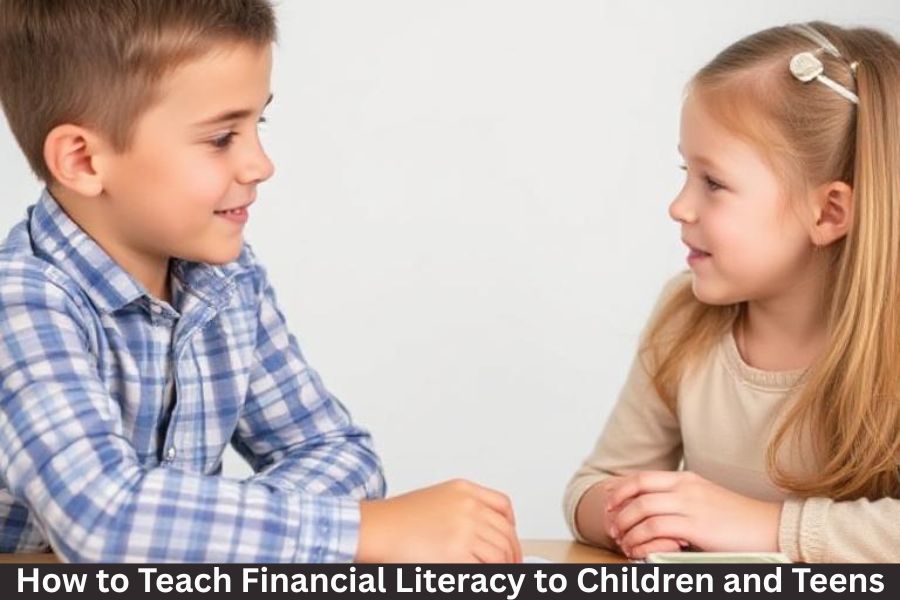In a world where financial decisions affect almost every part of our lives, financial literacy is a must-have life skill—yet it’s often overlooked in traditional education. Teaching children and teens how to manage money, make smart choices, and understand the value of saving from a young age can set them up for long-term financial success and independence.
The good news? You don’t need to be a financial expert to start teaching these essential skills at home. Whether your child is five or fifteen, there are age-appropriate ways to introduce financial concepts and build strong money habits that last a lifetime.
Why Is Financial Literacy Important for Kids and Teens?
- Promotes responsible decision-making
- Prepares them for real-world expenses
- Reduces chances of debt and financial stress in adulthood
- Encourages saving and investing early
- Builds confidence and independence
By starting early, kids can learn that money is a tool—not a mystery.
Teaching Financial Literacy by Age Group
1. Ages 3–7: The Basics of Money
At this stage, kids are just beginning to understand what money is. Focus on introducing simple concepts like:
- Identifying coins and bills
- Understanding that things cost money
- Distinguishing between wants and needs
- Using a piggy bank to save coins
Activities:
- Play “store” with play money
- Let them hand over cash at real stores
- Read books like “Bunny Money” or “The Berenstain Bears’ Trouble with Money”
2. Ages 8–12: Earning, Saving, and Budgeting
This is the ideal age to teach basic money management and encourage independence.
Key lessons:
- Earning money through chores or small jobs
- Setting savings goals
- Creating a simple budget
- Understanding delayed gratification
Activities:
- Give a weekly allowance and guide them on how to divide it: Save, Spend, Give
- Open a savings account in their name
- Use apps like PiggyBot or Bankaroo for digital tracking
3. Ages 13–18: Real-World Financial Skills
Teens are capable of grasping more complex concepts and may be earning their own money. This is the time to teach:
- Budgeting for monthly expenses
- Using debit and credit cards responsibly
- Understanding interest and loans
- Basics of investing
- The importance of credit scores
- Saving for college or big goals
Activities:
- Help them create a monthly budget for their spending
- Show them how online banking works
- Discuss mobile payment apps (Venmo, Apple Pay, etc.)
- Involve them in family financial discussions where appropriate
- Encourage part-time jobs or internships to earn money and gain experience
Tips for Teaching Financial Literacy at Home
Lead by Example
Children learn best by observing. Model good financial habits—budgeting, saving, and talking openly (and calmly) about money.
Use Everyday Moments
Trips to the grocery store, paying bills, or discussing utility usage are great real-life teaching moments.
Encourage Goal Setting
Whether it’s a new toy or a car, help your child set savings goals and track progress. This builds motivation and discipline.
Make It Fun
Use games like Monopoly, The Game of Life, or Cashflow for Kids to teach money management in an entertaining way.
Be Honest
If your family is budgeting or cutting back, share age-appropriate reasons. This teaches transparency and adaptability.
FAQs: Teaching Kids and Teens About Money
Q1: When should I start teaching my child about money?
As early as age 3. Even toddlers can begin understanding basic money concepts.
Q2: Should kids get an allowance?
Yes, if it’s used as a tool for teaching budgeting, saving, and spending—not just free money.
Q3: What’s the best way for teens to learn budgeting?
Have them manage a set amount each month for personal expenses. Budgeting apps or spreadsheets can help them track spending.
Q4: How do I explain credit and debt to my teen?
Use examples: show how interest accumulates on credit card debt, and explain how credit scores affect future financial decisions like loans or renting an apartment.
Q5: Is it okay to talk about financial mistakes?
Yes! Being honest about your own money mistakes (age-appropriately) helps kids learn that everyone can improve and make better choices in the future.



